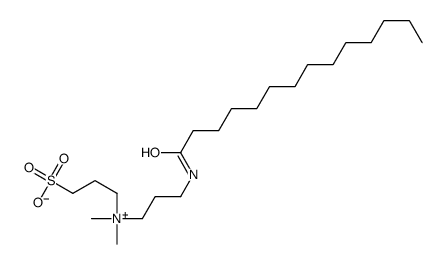Antitumor activity of CTFB, a novel anticancer agent, is associated with the down-regulation of nuclear factor-kappaB expression and proteasome activation in head and neck squamous carcinoma cell lines.
Sergej Skvortsov, Ira Skvortsova, Taras Stasyk, Natalia Schiefermeier, Andreas Neher, Andreas R Gunkel, Guenther K Bonn, Lukas A Huber, Peter Lukas, Christopher M Pleiman, Heinz Zwierzina
Index: Mol. Cancer Ther. 6 , 1898-1908, (2007)
Full Text: HTML
Abstract
This study aimed to characterize the antitumor activity of 5-Chloro-N-[2-[2-(4-chloro-phenyl)-3-methyl-butoxy]-5-trifluoromethyl-phenyl]-2-hydroxy-benzamide (CTFB), a novel anticancer agent, in head and neck cancer cell lines, FaDu, SCC-25 and cisplatin-resistant CAL-27. CTFB was generated as a result of an extensive medicinal chemistry effort on a lead compound series discovered in a high-throughput screen for inducers of apoptosis. All cell lines showed significant growth delay in response to CTFB treatment at a concentration of 1 micromol/L with 17.16 +/- 2.08%, 10.92 +/- 1.22%, and 27.03 +/- 1.86% of cells surviving at 120 h in FaDu, CAL-27, and SCC-25, respectively. To define proteins involved in the mechanism of action of CTFB, we determined differences in the proteome profile of cell lines before and after treatment with CTFB using two-dimensional difference gel electrophoresis followed by computational image analysis and mass spectrometry. Eight proteins were found to be regulated by CTFB in all cell lines. All these proteins are involved in cytoskeleton formation and function and/or in cell cycle regulation. We showed that CTFB-induced cell growth delay was accompanied by cell cycle arrest at the G(0)-G(1) phase that was associated with the up-regulation of p21/WAF1 and p27/Kip1 expression and the down-regulation of cyclin D1. Furthermore, we showed that activity of CTFB depended on the down-regulation of nuclear factor-kappaB (NF-kappaB) and NF-kappaB p65 phosphorylated at Ser(536). The level of proteasome activity correlated with the response to CTFB treatment, and the down-regulation of NF-kappaB is accompanied by enhanced proteasome activity in all investigated head and neck cancer cell lines. In this report, we show that CTFB reveals multiple effects that lead to delayed cell growth. Our data suggest that this compound should be studied further in the treatment of head and neck cancer.
Related Compounds
| Structure | Name/CAS No. | Molecular Formula | Articles |
|---|---|---|---|
 |
ASB-14
CAS:216667-08-2 |
C22H46N2O4S |
|
Advances in protein solubilisation for two-dimensional elect...
1999-01-01 [Electrophoresis 20 , 660-663, (1999)] |
|
Peptidomimetic antibiotics target outer-membrane biogenesis ...
2010-02-19 [Science 327(5968) , 1010-1013, (2010)] |
|
Two-dimensional electrophoresis and peptide mass fingerprint...
2001-05-01 [Electrophoresis 22(9) , 1686-1696, (2001)] |
|
Prostaglandin E receptor type 4-associated protein interacts...
2008-04-11 [J. Biol. Chem. 283(15) , 9692-9703, (2008)] |
|
Stepwise solubilization-based antigen removal for xenogeneic...
2013-05-01 [Acta Biomater. 9(5) , 6492-501, (2013)] |